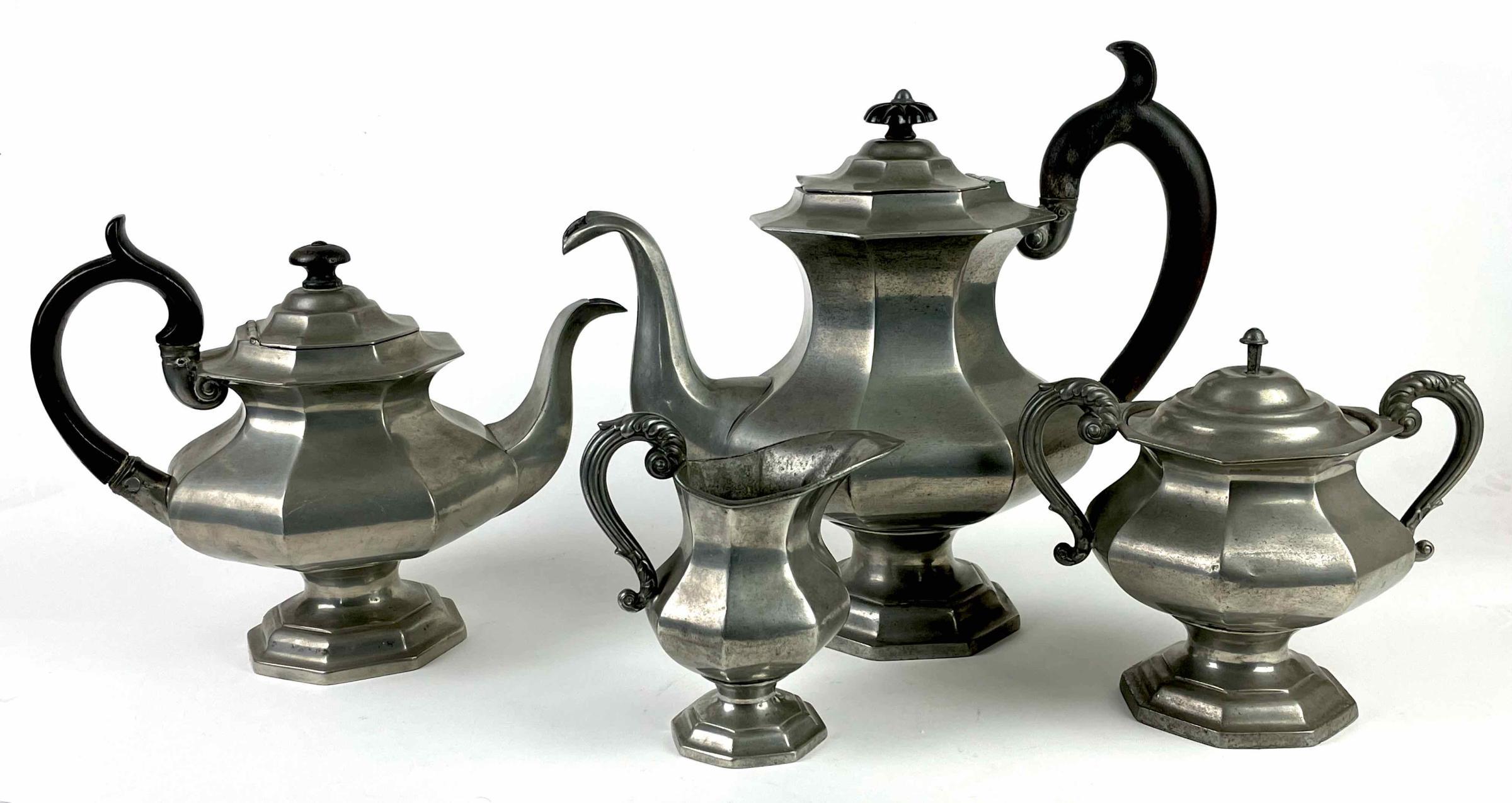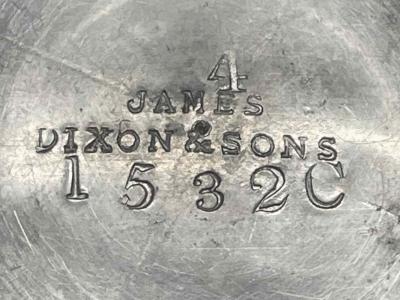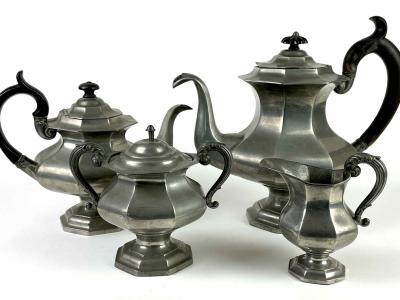Tea and coffee service
Sheffield, England
1835-1842
Maker
James Dixon & Sons (1835 to the present)
Measurements
.1 coffeepot, 11 in x 12-1/4 in x 6-3/4 in; .2 teapot, 8-1/2 in x 10-5/8 in x 6-1/8 in; .3 creamer, 5-3/8 in x 5-1/4 in x 3-1/2 in; .4 sugar bowl, 6-5/8 in x 7-3/8 in x 5 in
Materials
Pewter (Britannia), unidentified hardwood (black handles and finials)
Credit Line
Historic Odessa Foundation, The David Wilson Mansion, Inc.
Accession Number
1971.818
Inscription
“4 / JAMES / DIXON & SONS / 2 5 3 2 / C” is stamped onto the bottom of each vessel.
Condition Notes
On the coffeepot (1971.818.1), the lid and tip of the spout are bent. On the teapot (1971.818.2), the finial and handle may be replacements. On the sugar bowl (1971.818.4), the rim and lid are bent, and the lid is missing its wooden finial.
Provenance
Ex coll. Mrs. E. Tatnall (Mary Corbit) Warner
Comments
This tea and coffee set is a classic example of inexpensive but finely crafted objects made of Britannia, a tin alloy (as is pewter) that included antimony and a small amount of copper. The result was a hard metal that took a durable shine. By the mid-19th century, it was often used as the base metal for electroplating. The bodies of the different vessels were bent to shape; the handles and handle sockets for carved wood parts were cast and soldered to the body.
James Dixon (1776-1852) established his first company in 1806. In 1823 the first Dixon son, William Frederick, joined the firm, and the names was changed to James Dixon & Son. It changed again in 1835 when the second son, James Willis, joined. The firm continued with some changes until today. The Dixon mark on the bottoms of the separate pieces in this service changed over time. The one employed on this set is the basis for its dating. For another, later Dixon example, see a pint mug, accession no. 1971.879.
Inspection of the black-painted finials and handles on the tea and coffee pots reveals some disturbances on the tea pot, indicating that those parts were likely replaced. The wood, which served as an excellent insulator from heat when the pots were in used, was subject to splitting. The finial of the sugar bowl lid likely split apart and was lost.


